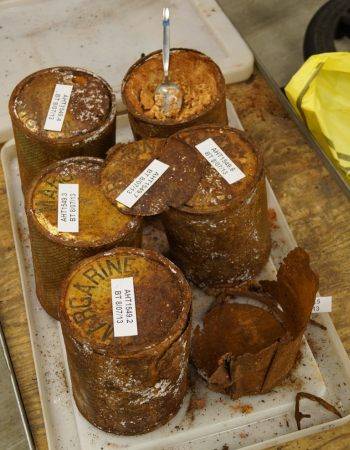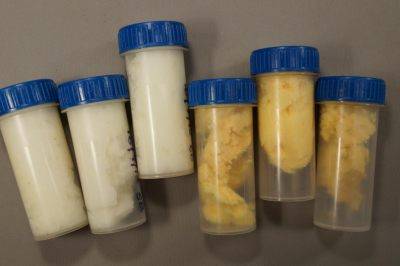Author: Sue
Date: 2 August 2013
Researching my cans of margarine seemed to be looking increasingly like a can of worms … or at least a can of misinformation! If many internet sites are to be believed, margarine production and sale was banned in New Zealand under The Margarine Act, 1908, repealed sometime after 1974. So how did Captain Scott come to have a case of what appeared to be NZ margarine in 1910?
Tracking down the said Act, I discovered that it didn't actually ban margarine at all. Designed to protect New Zealand's dairy industry—which, it was believed, would take a battering if margarine coloured to imitate butter, was readily available as a low-priced butter substitute—the Act actually banned the addition of yellow colourants in margarine.
Margarine tins before the contents were emptied
And other countries including Australia, France, Denmark and some US states were doing the same. While allowing the supposedly appealing yellow colouring of butter (which they still do, for that matter … after all, have you ever seen yellow milk?), prohibiting the colouring of margarine was designed to greatly reduce its popularity with consumers. Some companies in the US got around the ban by including sachets or capsules of yellow colouring with their margarine, to be stirred or kneaded through before serving.
But back to New Zealand and to Captain Scott ...
In addition to banning colourants, I found that The Margarine Act, 1908, also strictly regulated margarine production and packaging. It stipulated that margarine could only be legally produced under an annually renewable licence, for a fee, and that every package had to be "distinctly and durably branded or marked 'MARGARINE' on the top and on one side, in printed capital letters not less than one and a half inches square …" And so that accounts for the unusual appearance of Scott's margarine tins … on which the letters are just under the compliance size. But should I mention that the margarine was a deep rich yellow colour, reminiscent of mango ice-cream? Or was that just the result of 100 years in the great freezer of Antarctica, perhaps?
Samples of lard and margarine
Oh, and a final colourful little twist to the story …
When NZ's Margarine Act, 1908, was finally repealed in 1989 allowing colourants to be introduced, the dairy industry cheekily lobbied the government to force all margarine manufacturers to colour their product blue … but, if that's to be believed, it clearly, and thankfully, failed!




